FROM HOTEL PÁV TO ON FOOT PRAGUE CASTLE
In the footsteps of Prague house signs
We have enriched your walk through the most beautiful places in Prague with a few stops at interesting Prague houses and their house signs.
Photos of house signs are used as a decoration in the newly renovated rooms of the hotel Pav.
2 hours, 4 hours slow walk with stops
5,7 Km
Among the other things, you will visit:
- Old town and the Old Town Square
- Charles Bridge
- The Lesser Town
- Prague Castle

From the hotel, go left.
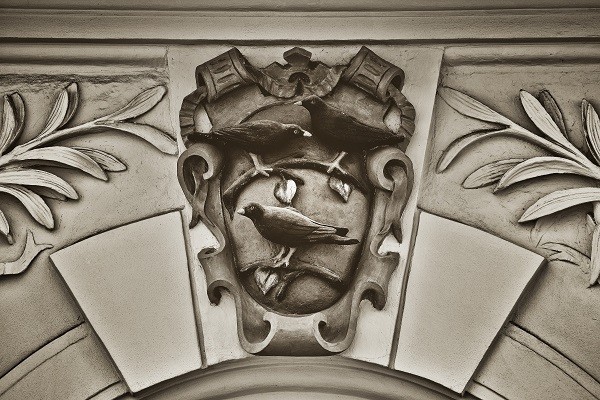
At the Three Blackbirds – Křemencova 15
When we exit Hotel Pav, we will fi nd the fi rst sign on the hotel’s facade – to the left of the main entrance. Above the door we see three small blackbirds sitting on the branches of a linden tree. Previously, the house was called At the Two Blackbirds. Sometimes during the renovations the signs were changed and in this case one blackbird was added. Unfortunately, we don’t always know the reason or the whole story behind the sign.
Where to go next: at the first corner turn right into Opatovická Street.
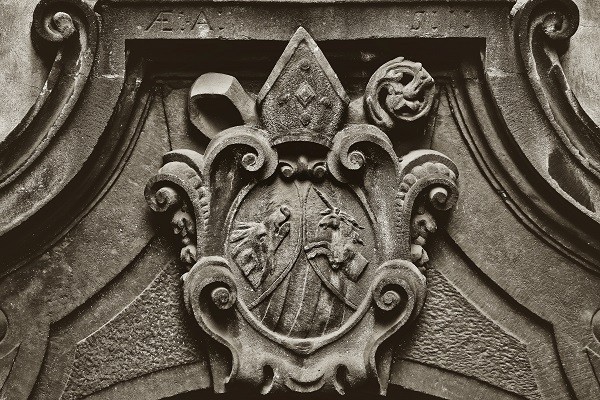
At the Bishop’s – Hat Opatovická 20
Around the corner in Opatovická Street, a large portal of the originally medieval Cistercian court of Nepomuk appears in front of us. At the end of the 17th century, it became the property of the monastery of St. Jan pod Skalou and underwent reconstruction in a Baroque style. In the cartouche above the threshold there is the coat of arms of the abbot dated 1719.
Where to go next: continue along Opatovická Street, turn right into Ostrovní Street and at the end turn left into Spálená Street. We will come to a large intersection with Národní třída, where we will go straight to Na Perštýně Street.
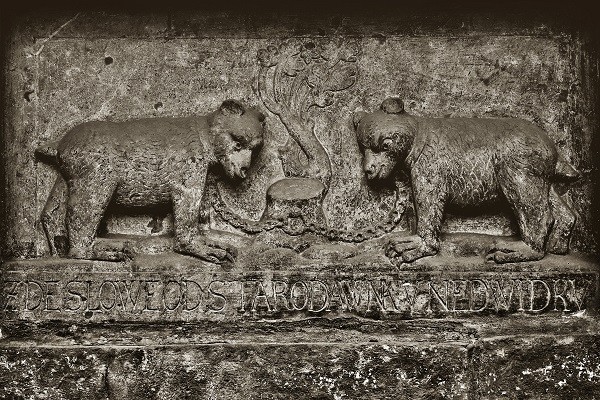
At the Bears house – Na Perštýně 7
At the Bears House (U Medvidku) can be found at the beginning of Na Perštýně Street on the left side, with the sign of two bears tied with chains behind the collars of a tree stump with the inscription „Zde slowe od starodawna u Nedwidků‟ (Here lies the old U Nedwidku). The house was also formerly called „U Nedwidku‟ or „At the Black Bear‟ and is named after one of the owners Jan Nedwidek, who founded a brewery here in 1466. The beer was brewed here continuously until 1898 and today again making it the Czech Republic’s smallest brewery.
Where to go next: we reach the end of Na Perstye Street, where we will see the intersection of 4 streets. We head to Husova Street - the second from the left.
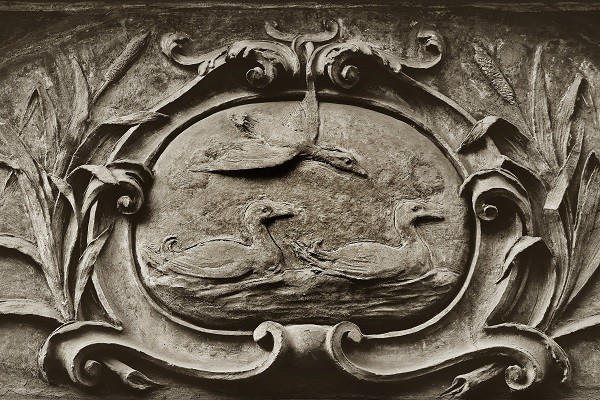
At the Three Wild Ducks – Husova 13
Three wild (or also evil) ducks or wild drakes probably date back to the pre-Battle of White Mountain period. The painting adorned the facade in 1628 under Jakub Baumayer, the last known owner of the house, before the house was abandoned during the Thirty Years’ War. At the beginning of the 18th century, the house was completely renovated together with this sign, when the cattail around it was probably added to the ducks on the lake.
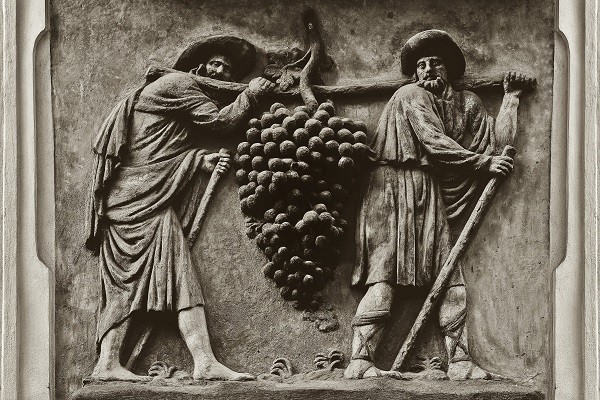
House At the Blue Grape –
Husova 15
Two smaller Gothic houses stood on this site. Over the years these were rebuilt several times and eventually merged into one. The house At the Blue Grape (or also At the Two Spies) acquired its present appearance in the second half of the 18th century and at that time the house emblem was placed on it, depicting the Old Testament scene of Joshua and Caleb bringing a giant grape from the land of Cannan. There were ten houses with a sign of grape in Prague. On our a walk we can see another one At the Green Grape near the Prague Castle, Úvoz street No. 30.
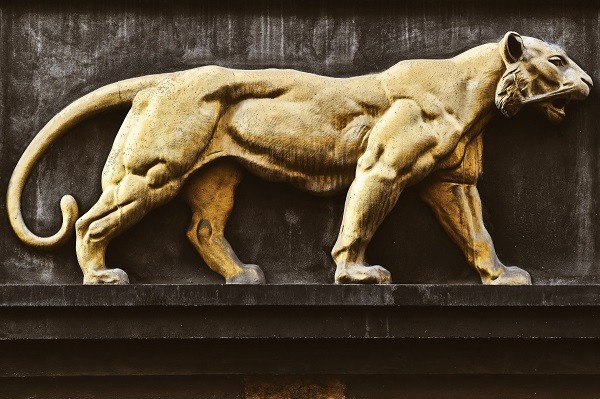
At the Golden Tiger – Husova 17
In the 15th century the house had a hoe as a sign, in the 16th century it received a black lion, which in 1713 was changed into a relief of a walking golden tiger. There was the famous Šoch Patriotic Café in 1930s. Mainly students, writers and theater playwrights such as J. K. Tyl, K. H. Macha or historian Frantisek Palacky would meet here. Later, a famous pub was established here, which in the recent past was frequently visited by the late writer Bohumil Hrabal.
Where to go next: At the first crossroads, turn right into Karlova street, at the next corner turn left until you find yourself on Male namesti. We continue straight. On the left we will see the Old Town Hall, but first we turn into the first alley on the right - Melantrichova.
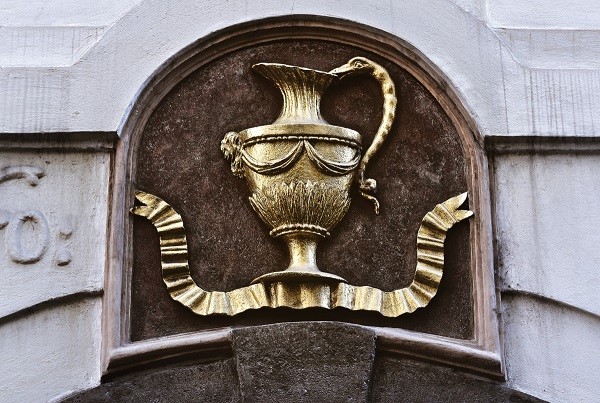
House At the Golden Jug –
Melantrichova 20
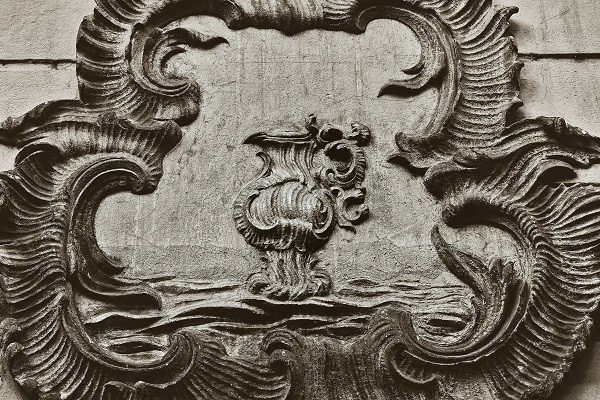
House At the Silver Jug – Melantrichova 18
Interestingly, even though both adjacent houses never had the same owner, their signs were very similar. The burgher’s House At the Silver Jug was already called At the Jug’s or At the Three Jugs at the beginning of the 15th century. For a long time thanks to general confusion both houses were called by the same name. It was around 1670 when both owners agreed to have a sign of a silver jug on one house and a gold one on the other.
Where to go next: We will return to the Old Town Square, where we can see the Old Town Astronomical Clock on the town hall tower. Every hour between 9:00 and 23:00, the astronomical clock moves through the solemn march of the apostles. We will walk across the square towards the corner gothic house.
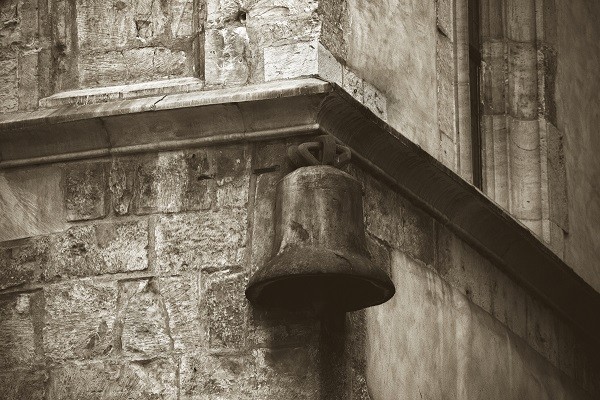
Stone Bell House) –
Staroměstské náměstí 13
This house is one of the oldest (2nd half of the 13th century) and also most famous monuments of Prague. The main dominance of the facade was rich decoration with Gothic architectural elements that celebrated the idea of the kingdom and the ruling family. A typical house sign was placed on the corner of a building in the 16th century. The bell may commemorate the entry of John of Luxembourg to Prague in 1310, when after a futile siege of the city at that time occupied by Henry of Carinthia, the gate was conquered from the inside and outside at an agreed sign – ringing of a bell of the hospital Church of Our Lady before Týn (the church is located to the right of the house).
Where to go next: Continue along a narrow alley to the right to a small square.
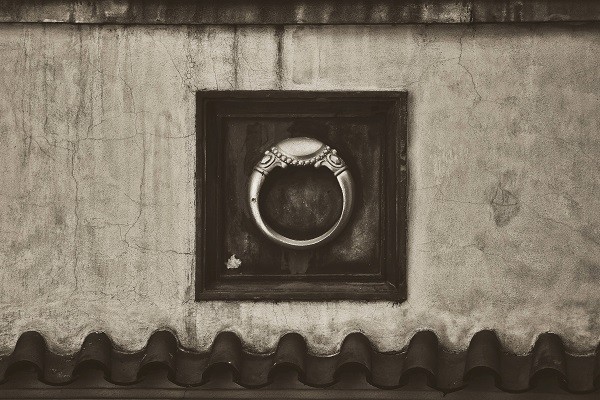
At the Golden Ring – Týnská 6
A wine taster lived here in the 15th centruy. His work was probably related to the busy operation of the neighboring Tyn Court – Ungelt, but not so much with a ring itself. It is said that one of the Old Town ghosts lost the ring on the market during night entertainment, the burgher picked it up and hung it over the gate. This provided magical protection for his house, as the ring, using a closed circle principle, protects against unclean forces. Today, there is an exposition of „Charles IV’s Prague – a magnifi cent construction site in Europe‟ (Museum of the Capital City of Prague).
Where to go next: We turn back to the Old Town Square, turn right into Tynska Street and walk to the end.
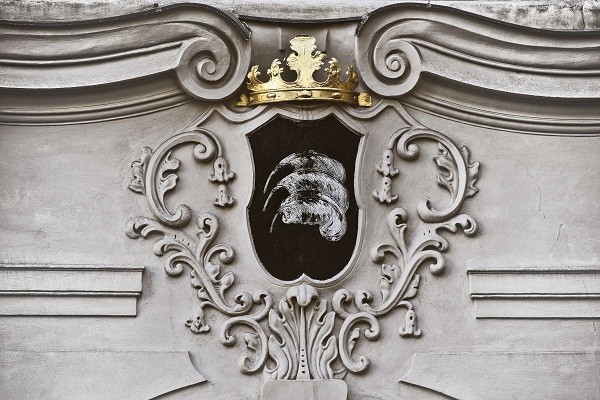
At the Three Feathers – Týnská ulička 10
Until the 17th century it was called In the Hell and the house was a little bit hid in the corner. In the fi rst third of the 18th century, when it belonged to the Kinsky family, it received a family crest above the passage with a crown of noble rank. The Kinsky family had three vertically curved spikes in the emblem, which the heraldics called wolf claws or pig tusks. In the second half of the 18th century during the reconstruction other owners changed the Kinsky emblem to feathers. The feathers represented a bird, a heavenly messenger, a mediator between heaven and earth.
Where to go next: We continue to the left along Dlouha Street, we walk along the northern edge of the Old Town Square, past the Church of St. Nicolas, across Franz Kafka square slightly to the left to Platnerska Street. This will take us to Marianske namesti, which we will cross across to Seminarska street and further to Karlova Street.
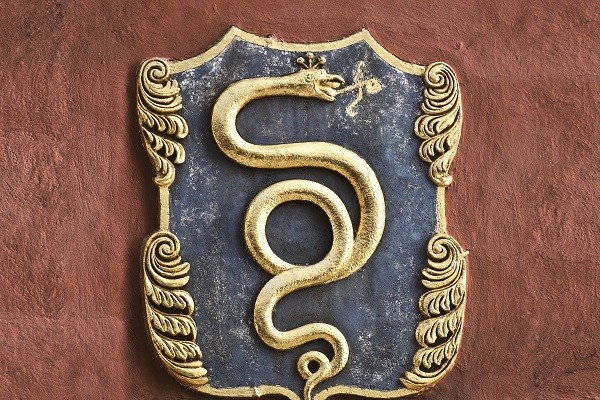
At the Golden Snake – Liliová 17
It is said that in front of this house the Armenian merchant Deodatus Dajamanus sold the very fi rst coff ee in Prague. He off ered then exotic novelty right on the street to people passing by. He was so successful that in 1714 he opened the fi rst café in Prague, at the Three Ostriches – this house with a fresco on the facade can be found right at the other end of the Charles Bridge. This house recieved its sign of the golden snake in the second half of the 18th century when there was a pharmacy. The snake was a symbol of healing in the Gothic period.
Where to go next: We continue along Karlova Street towards the Charles Bridge. We cross it and continue along Mostecka Street to Malostranske namesti, where we turn right. On the left side you can see the church of St. Nicolas, but we continue on the right side straight to Tomasska street. We come to a right-hand bend that turns past the Wallenstein Palace.
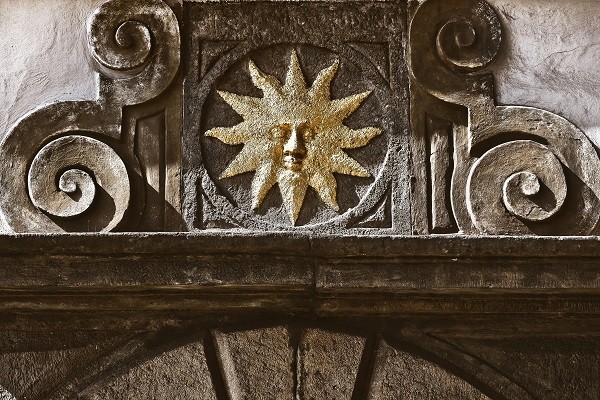
At the Golden Sun – Valdštejnská 20
A huge fi re took over the Lesser Town in 1541 and completely destroyed many buildings. After 13 long years a Renaissance house was built here and became the residence of imperial servants. The most interesting of them was Havel Oberšverder, a custodian of imperial silverware at the court of Rudolf II. He acquired the house in 1623 and had a relief of golden sun carved over the portal. You can fi nd The National Pedagogical Museum and library of J. A. Comenius in here now.
Where to go next: Now we turn left straight up through Snemovni Street, turn left on a small square and turn right at the end of the street. We find ourselves in Nerudova Street, which climbs up to the Prague Castle and where it is possible to see signs on almost every house. We'll show you some of them.
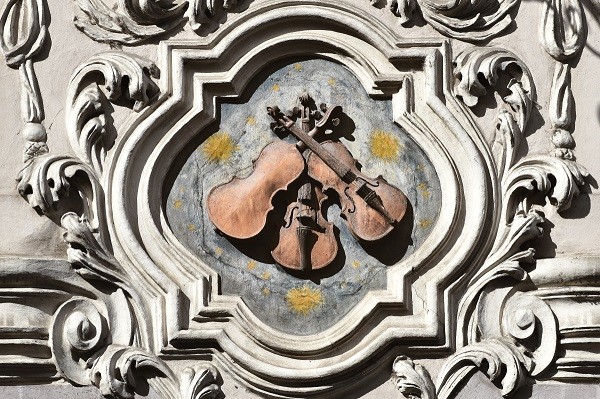
House At the Three Violins – Nerudova 12
In the 17th and 18th century the house was owned by three violin maker families. In 1667 the house was bought by the lute maker Barbora Ottova, widow of the violin master. Then it was owned by her son-in-law, the famous violinist Leonard Pradter, who was making string instruments for the musicians of the Loreta church. Another owner was his apprentice Tomas Edlinger. Tomas and his son Jachym Jan Edlinger brought the trade to great prosperity. Their violins, lutes and mandolins have been known at home and abroad. The house signs were given by the Edlinger family to the house around 1700 in a memory of the violin masters who lived here. Legend has it that sometimes skeleton ghosts play on the violin at full moon.
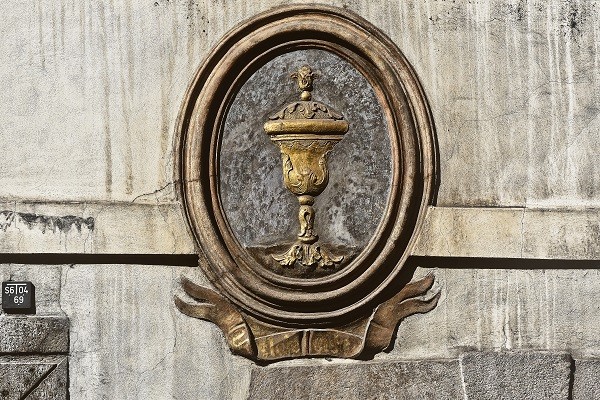
At the Golden Goblet – Nerudova 16
This sign is one of the fourteen oldest guild signs in Prague. As early as in 1586 the house was a home to a goldsmith, but the sign was put up later, after 1660 by the master Jan Schuman. Goldsmiths and jewelers generally liked this street and were owners of several houses here. At the Golden Goblet house was owned together with the neighboring building by the excellent Baroque architect Jan Blažej Santini-Aichl for several years. Today we can fi nd an antique shop here with many rarities and antiques.
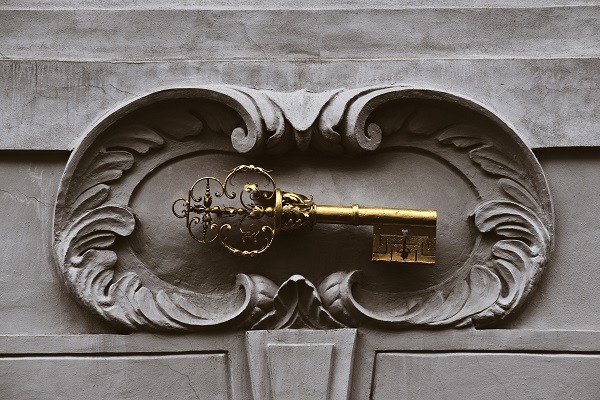
At the Golden
Key / House At the Golden Bird Noh – Nerudova 27
The meaning of the sign origin or name is unknown. In the Middle Ages a moat was here and in 1490 there is a fi rst mention of a house with garden by this moat. Only the Gothic cellar and the Renaissance ground floor are preserved today from this house. It was later rebuilt in the Baroque and Classicist style. It is possible that the original name refers to the mythical bird Noh, which occurs in Old Czech legends and fairy tales.
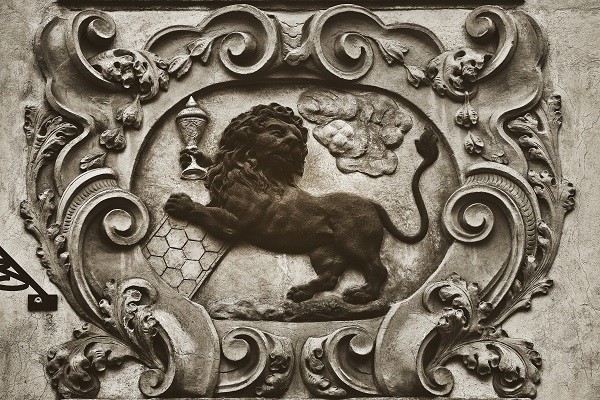
House At the Red Lion – Nerudova
41
House signs were often inspired by zodiac signs. Lion and Cancer appear on man houses in Prague. This semi-detached house is interconnected at the ground floor level and fi rst basement, with a Gothic origin but later adapted to its current form in the Baroque style. Both signs dates to 1608 – a red lion with a gold cup in the paw and a relief image of a cancer decorated with stucco fl owers. The house was owned by Petr Brandl’s mother. The famous Baroque painter was born and lived here. A unique facade was preserved thanks to him when he renovated it in 1726.
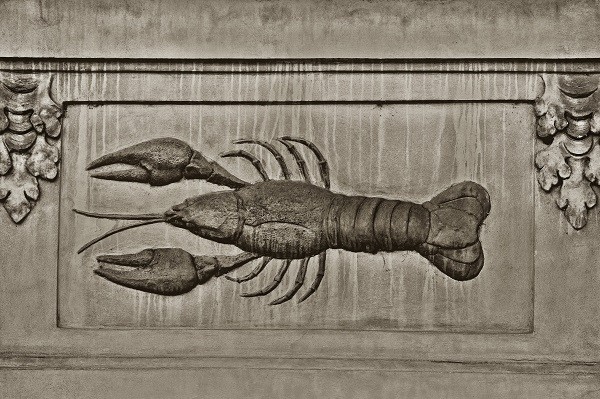
House At the Green Cancer –
Nerudova 43
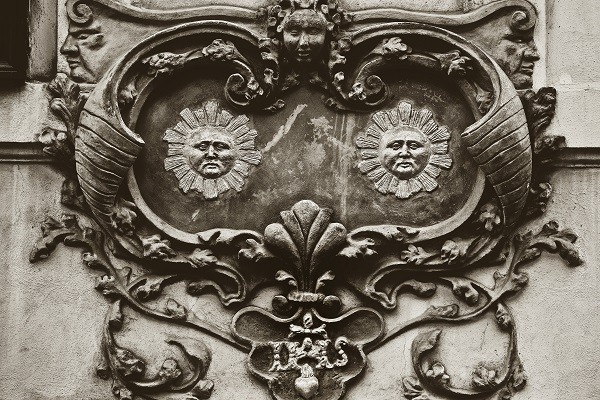
At the Two Suns – Nerudova 47
„A beautiful, warm June night. As if the Moon was shining the most happiest on the roofs of Ostruhova street, on the quiet roofs of these connecting two houses At the Two Suns and At the Deep cellar. Those peculiar roofs, where you can playfully get from one to another, with all it’s corners, all it’s gutters, all it’s a continuation.‟ These are the fi rst words of Jan Neruda’s short story Evening gossip (Večerní šplechty) from book Prague Tales (or Lesser Town Tales). He moved into the house as a child in 1838, when his father Antonin rented a tobacco shop here. Carefree childhood, picturesque fi gures and all sorts of hidden corners infl uenced Neruda and signifi cantly impacted his work. After Neruda’s death a memorial plaque was added to the facade just next to the sign and the name of the street now pays tribute to him as one of the most essential writers of Czech literature and residents of the Lesser Town.
Where to go next: we continue up the same street, which only changes from Neruda to Uvoz.
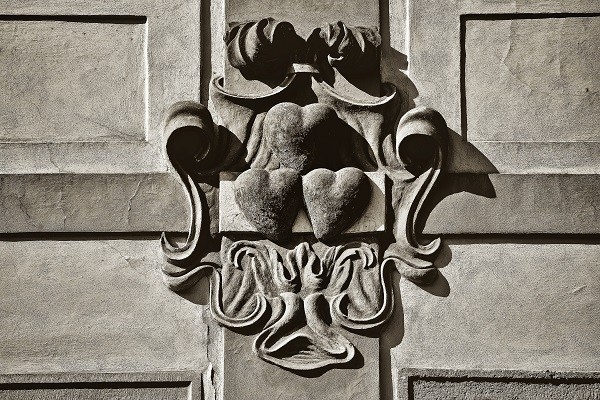
At the Three Red Hearts – Úvoz 14
The early Baroque burgher house, whose facade dates back to around 1700. Interesting fact is that the son of the goldsmith Jan Schuman, the owner of the house At the Golden Goblet, which we passed earlier, was responsible for putting up of this sign. However he never worked as a goldsmith like his father.
Where to go next: we continue up the Uvoz street and a beautiful view of the Strahov Monastery opens up in front of us. On the left is a view of the hill and Petrin Park, and when we turn around, we have Prague in the palm of our hand. We continue until we reach Pohorelec Square. We keep to the left until we reach almost the end.
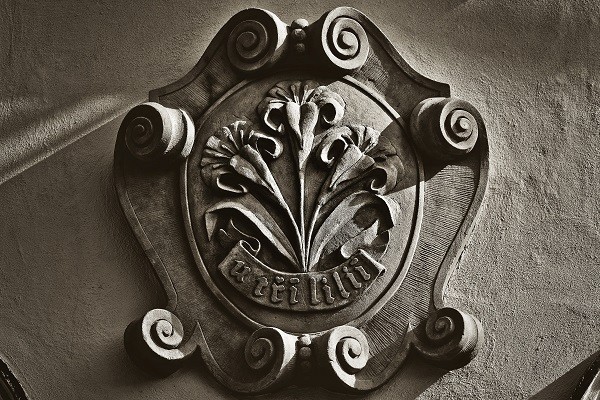
At the Three Lilies – Pohořelec 16
This house sign dates back to the reconstruction in 1715. The white lily is a symbol of innocence, but also of cold beauty. The house was an inspiration for two Czech writers – Jan Neruda and Jakub Arbes. Both of them wrote a story of a girl who rushed to the Inn At the Three Lilies for a dance despite her mother’s death. These hidden places of the Lesser Town and Pohorelec only encourage mysterious, even haunting stories.
Where to go next: we will return through Pohorelec Square and instead of turning into Uvoz Street we will turn left, where Loretanska Street will take us to Hradcany Square.
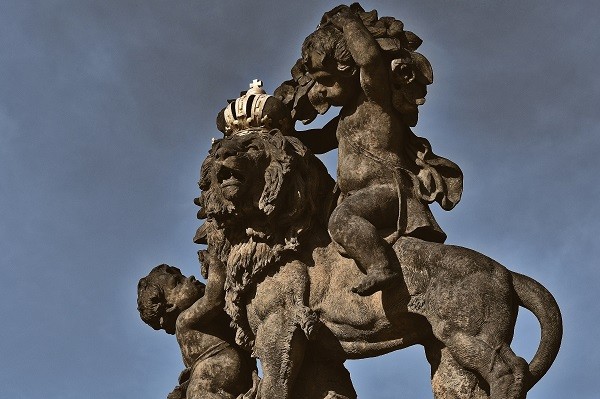
Gate of the Giants –
Hradčanské náměstí
We are at the end of our walk, at the western and also main gate to the Prague Castle. We are welcomed by four large statues. Two are wrestling titans with a bronze club and a dagger. They are accompanied by the symbol of the Austrian Empire – an eagle with a Austrian crown, and by the symbol of the Czech Kingdom – a lion with a scepter. The giant sculptures are complemented by a richly decorated black and gold Rococo lattice, a magnifi cent and stylish welcome to all visitors.
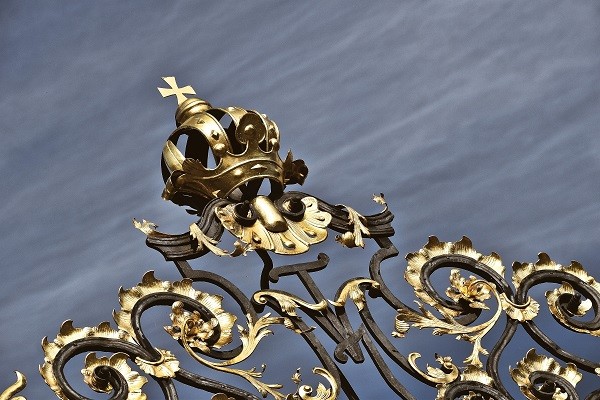
Brána gigantů – Hradčanské náměstí
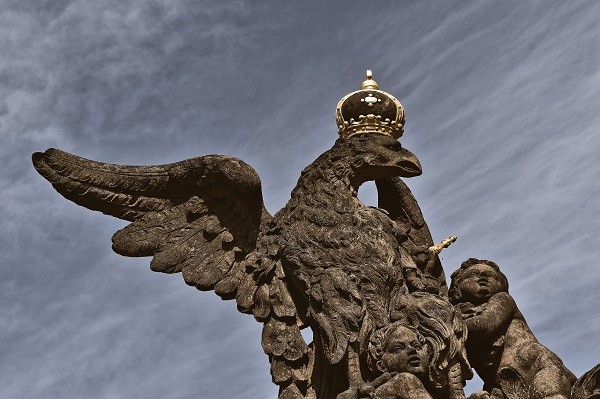
Brána gigantů – Hradčanské náměstí
Sources and citation:
- Photos: Robert Bláha
- House signs of the old Prague, PhDr. Lydia Petráňová, Published by Panorama, 1991
- www.pamatkovykatalog.cz
- www.turistika.cz/mista/praha-stare-mesto-dum-u-modreho-hroznu/detail
- cs.wikipedia.org/wiki/Dum_U_Kamenneho_zvonu
- ghmp.cz/dum-u-kamenneho-zvonu
- www.turistika.cz/mista/dum-u-tri-houslicek/detail
- www.ptejteseknihovny.cz/dotazy/mala-strana-a-jan-neruda
 en
en cs
cs de
de fr
fr es
es it
it pl
pl ru
ru